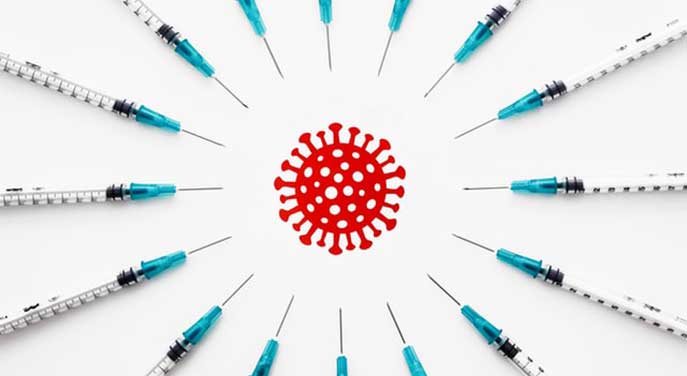 It was another quiet and relaxing Christmas in our household. We gazed at the tree for hours, admiring the lights and ornaments. We opened our presents, watched movies, read books, ate sumptuous meals, and listened to J.S. Bach’s Christmas Oratorio.
It was another quiet and relaxing Christmas in our household. We gazed at the tree for hours, admiring the lights and ornaments. We opened our presents, watched movies, read books, ate sumptuous meals, and listened to J.S. Bach’s Christmas Oratorio.
Perfect!
Well, almost perfect.
My son could occasionally be heard laughing and singing to a DVD of Ricky’s Room. For those of you who are blissfully unaware of this short-lived Canadian children’s program, think of it as a low-rent version of Barney & Friends. Substitute an annoying purple dinosaur with an equally irritating blue rhino on a small budget set, and you get the picture.
If that doesn’t make most people shudder, I don’t know what will.
Oh, wait. Yes, I do – the Omicron variant is spreading like wildfire in Canada.
Omicron, the 15th letter in the Greek alphabet and means ‘little O,’ was first reported to the World Health Organization (WHO) on Nov. 24. It was initially detected by laboratories in Botswana and South Africa (the country that ultimately reported it) on Nov. 22, based on samples collected in the two weeks previous.
Omicron has been officially confirmed in more than 80 countries. It’s “probably” spread to most countries, WHO chief Tedros Adhanom Ghebreyesus told the media on Dec. 15, “at a rate we have not seen with any previous variant.”
In slightly over one month, Omicron has officially displaced Delta as the most commonly identified variant of the original coronavirus. While the number of deaths associated with this new variant appears to be much lower than the original coronavirus and Delta variant, the spread has been more intense.
Countries such as the United States, United Kingdom, Netherlands, Belgium, Japan, France, Poland, Greece, Australia and Germany have experienced massive surges.
Canada has experienced a significant increase with the Omicron variant, too.
What parents need to know about the COVID-19 vaccine for kids
Some parents have jumped at the chance to get their kids vaccinated, while others are hesitant and still have questions
Five facts all parents should know about the mRNA vaccines
Out of an abundance of caution, parents may want to avoid giving their children the new mRNA COVID-19 jabs
Ontario and Quebec both exceeded 10,000 COVID-19 cases on or before Christmas Day, but the two provinces have witnessed decreases since then (9,418 and 8,231 on Dec. 27, respectively). Alberta announced 1,647 new cases on Dec. 22, while B.C. was at 2,441 on Dec. 23. Saskatchewan recorded 194 cases on Dec. 23 and said 148 of them were suspected or related to Omicron. Nova Scotia recorded 581 cases on Monday. Manitoba hit 675. Newfoundland and Labrador announced a record-breaking 357 infections over a three-day period during the holidays. New Brunswick reported 639 new cases, and Prince Edward Island had a two-day total of 156 cases.
According to the federal government’s health website, the Omicron surge pushed the country’s total COVID-19 case count to 2,000,976 as of Boxing Day. The case count is likely even higher than what’s being reported and will surely rise when it’s updated.
None of these statistics are pleasing. Yet there may be a silver lining.
 Dr. David Jacobs, president of the Ontario Association of Radiologists and chair of the Ontario Specialists Association, tweeted some fascinating observations on Dec. 26.
Dr. David Jacobs, president of the Ontario Association of Radiologists and chair of the Ontario Specialists Association, tweeted some fascinating observations on Dec. 26.
“When I opened my 1st case yesterday,” he wrote, “it was a covid pneumonia and I thought to myself, here we go again. The next case that I opened was completely normal, and the next one, and the next one, and so on.”
By day’s end, Jacobs had “tallied no more than four suspected covid pneumonias. At the worst of the Delta wave, I could tally as many as 60 a shift.”
When he spoke with ER physicians, “the consistent comment was that they were flooded with patients with upper respiratory tract complaints, but they were far less sick than in the previous waves. Occasionally hidden among these dozens of [people] was a really sick patient.”
Meanwhile, he discovered “no one had recently admitted a patient to hospital who had been boosted or fully vaccinated. Those who have been sick enough to be admitted to hospital in the most recent wave have been unvaccinated patients.”
What does this mean?
Several things, according to Jacobs.
For instance, “the Omicron wave will not come anywhere near the initially modelled worst-case scenario in terms of hospitalization and ICU utilization.” The spread is likely higher than the official case count, which is “good news as it means that the case fatality rate and the hospitalization rate are likely both significantly lower than reported.”
Jacobs also emphasized it’s “desperately important that people get vaccinated” since it’s protecting people from “severe disease.”
Moreover, “if you believe that Omicron is a milder variant, that seems to be true only for the vaccinated.” Hence, he suggested that due to its low impact on vaccinated Canadians, “we should stop focusing on case counts and use more relevant metrics such as hospitalizations and ICU numbers.”
Could Omicron signal the beginning of the end for COVID-19?
It’s too early to say, but it’s certainly something for us to watch in 2022.
And maybe my son’s fascination with that bloody blue rhino will be gone, too!
Michael Taube, a Troy Media syndicated columnist and Washington Times contributor, was a speechwriter for former prime minister Stephen Harper. He holds a master’s degree in comparative politics from the London School of Economics. For interview requests, click here.
The opinions expressed by our columnists and contributors are theirs alone and do not inherently or expressly reflect the views of our publication.
© Troy Media
Troy Media is an editorial content provider to media outlets and its own hosted community news outlets across Canada.


